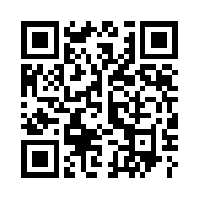Abstract
This article has two aims. One is to critique and expand Stafleu's ideas about artefacts. The other, which may be seen as a demonstration of this expansion, is an outline of a rich view of the type of artefact that is information and communication technology (ICT) and its use in human life as information systems (IS). ICT is a kind of artefact that is more complex than those covered by Stafleu’s idea, and it has been considered in at least five ways: the artificial intelligence question of what is the computer, the computer question of the generation of software libraries, the question of how to develop good information systems, the question of benefits and harm when using ICT, and the question of impact that ICT and society have on each other. An important sixth question is about the varied nature of research into all the above, which goes beyond Stafleu’s idea of scientific research to include design, interpretive and critical research. For each of these questions, a brief outline of mainstream approaches is followed by an approach based on various parts of Dooyeweerd’s philosophy. The final two sections consists of a discussion of the assistance that Dooyeweerdian philosophy can offer in these six areas and, in turn, how research in these areas might contribute to Dooyeweerdian philosophy.Copyright information
- Ownership of copyright in terms of the Work remains with the authors.
- The authors retain the non-exclusive right to do anything they wish with the Work, provided attribution is given to the place and detail of original publication, as set out in the official citation of the Work published in the journal. The retained right specifically includes the right to post the Work on the authors’ or their institutions’ websites or institutional repositories.
Publication and user license
- The authors grant the title owner and the publisher an irrevocable license and first right and perpetual subsequent right to (a) publish, reproduce, distribute, display and store the Work in any form/medium, (b) to translate the Work into other languages, create adaptations, summaries or extracts of the Work or other derivative works based on the Work and exercise all of the rights set forth in (a) above in such translations, adaptations, summaries, extracts and derivative works, (c) to license others to do any or all of the above, and (d) to register the Digital Object Identifier (DOI) for the Definitive Work.
- The authors acknowledge and accept the user licence under which the Work will be published as set out in https://creativecommons.org/licenses/by/4.0/ (Creative Commons Attribution License South Africa)
- The undersigned warrant that they have the authority to license these publication rights and that no portion of the copyright to the Work has been assigned or licensed previously to any other party.
Disclaimer: The publisher, editors and title owner accept no responsibility for any statement made or opinion expressed by any other person in this Work. Consequently, they will not be liable for any loss or damage sustained by any reader as a result of his or her action upon any statement or opinion in this Work.
In cases where a manuscript is NOT accepted for publication by the editorial board, the portions of this agreement regarding the publishing licensing shall be null and void and the authors will be free to submit this manuscript to any other publication for first publication.
Our copyright policies are author-friendly and protect the rights of our authors and publishing partners.

